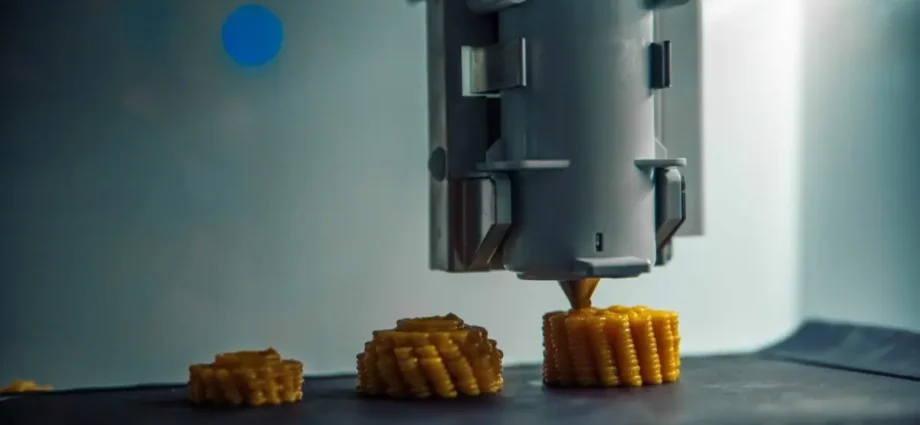It is not science fiction, the “3D Fruit Printer” is a reality carried out by the English company Dovetailed, which is capable of creating gelatinous spheres from a liquid, turning it into a “pseudo fruit” with a cylindrical shape like a few grains of pomegranate or currants.
We are really facing a machine that prints fruit in a three-dimensional way, through the spherification technique, used in molecular cuisine.
The fruit juice is deposited and mixed in cold with an alginic acid from brown algae and with calcium chloride. This mixture produces a chemical reaction that generates a protective sheet in the form of a skin or coating on the liquid sphere, and it remains stable until we bite or crush it when chewing.
As we can see, the process is more about mixing rather than creating printing, generating cylindrical spheres like corn kernels or pearls that have a fruity flavor, from the initial liquid from which it starts.
It does not really print a pear, with its oval shape, but it is capable of recreating a compound like salmon roe flavored with Pear in some round spheres.
The founder of the company, Vaiva Kalnikaité, said in a recent interview:
The 3D fruit printer will open up new possibilities not only for professional chefs, but also for us and our kitchens, as it will allow us to improve and expand our gastronomic experiences. We have reinvented the concept of fresh fruit on demand.
The technological device is aimed at a professional public or intrepid culinary creators who boast of innovation and its handling does not require any previous training to achieve exceptional results.
The field of action that opens with the appearance of this technology, makes us face the possibility of creating new fruits from juice mixtures, as well as recreating existing ones.
The machine was presented a few days ago at an experimental event at TechFoodHack, in the city of Cambridge in England, in which a division of the Redmond giant (Microsoft) also participated where a small group of gastronomy lovers, designers and passionate about the computer science enjoyed and witnessed the development of new gastronomic realities.










